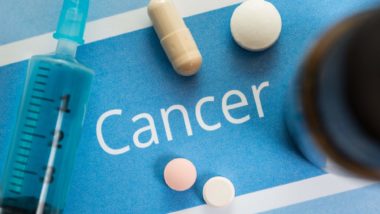
GlaxoSmithKline’s Lamictal – first approved by the FDA in 1994 – is approved for the treatment of various forms of epilepsy, including Lennox-Gastaut Syndrome, as well as bipolar disorder. It is also prescribed as an off-label treatment for clinical depression. Lennox-Gastaut Syndrome is a severe form of epilepsy in which seizures typically begin before 4 years of age.
Lamictal, more than any other drug, has been linked to cases of Stevens Johnson Syndrome and toxic epidermal necrolysis. One study found that a person taking Lamictal has a 14-times greater likelihood of getting SJS or TEN, which affect both the skin and the mucous membranes. Cell death causes the epidermis (the outer layer of skin) to separate from the dermis (the layer of skin that separates the epidermis from the body’s tissue).
Three in 1,000 adults report a serious rash with Lamictal use while the incidence is much higher in children – one in 100, according to the Epilepsy Foundation.
The Institute for Safe Medication Practices found that in 2012, 119 of 200 reports to the FDA of severe cutaneous adverse reactions were linked to Lamictal, with 86 of the 119 reports involved Stevens Johnson Syndrome and toxic epidermal necrolysis.
While most cases of SJS and TEN appear in the first two to eight weeks of therapy, or if the medication is suddenly stopped then resumed, the disease can take years to develop in adults who take Lamictal to treat bipolar disorder.
Stevens Johnson Syndrome is marked by flu-like symptoms that ultimately produce a potentially life-threatening skin disease manifest by a rash similar to a burn, open sores and skin peeling. Lamictal SJS symptoms have been reported as a purplish rash that spreads, painful blisters of the mucous membranes, blisters on the eyes, nose, mouth, and genitals, sloughing off of skin in large patches, joint and muscle pain and a burning sensation all over the body.
The condition is diagnosed as toxic epidermal necrolysis based on the type of blisters and erosions and how much of the body’s surface area is covered with them. Blisters and erosions that cover between 3 percent and 10 percent of the body are considered SJS; 11 percent to 30 percent are an overlap between SJS and TEN; and if more than 30 percent of the body is covered it’s diagnosed as TEN.
The leading cause of SJS and TEN are linked to antibiotics, particularly sulfa drugs, though up to 200 different types of medications have been associated with the infections. There is no reliable test to determine a nexus between a particular drug and SJS /TEN on an individual basis. Medical professionals typically determine what drug may be the culprit based on the amount of time between a drug’s first use and when skin reactions began.
Warning signs for an adverse reaction to Lamictal include rash or hives, fever and swollen glands, painful sores in the mouth or around the eyes, and swelling of the lips or tongue.
Do YOU have a legal claim? Fill out the form on this page now for a free, immediate, and confidential case evaluation. The Stevens Johnson Syndrome attorneys who work with Top Class Actions will contact you if you qualify to let you know if an individual lawsuit or class action lawsuit is best for you. [In general, SJS lawsuits are filed individually by each plaintiff and are not class actions.] Hurry — statutes of limitations may apply.
ATTORNEY ADVERTISING
Top Class Actions is a Proud Member of the American Bar Association
LEGAL INFORMATION IS NOT LEGAL ADVICE
Top Class Actions Legal Statement
©2008 – 2024 Top Class Actions® LLC
Various Trademarks held by their respective owners
This website is not intended for viewing or usage by European Union citizens.
Get Help – It’s Free
Help for Victims of Stevens Johnson Syndrome
If you or a loved one were diagnosed with Stevens Johnson Syndrome (SJS) or toxic epidermal necrolysis (TEN) after taking a prescribed or over-the-counter medication, you may be eligible to take legal action against the drug’s manufacturer. Filing an SJS lawsuit or class action lawsuit may help you obtain compensation for medical bills, pain and suffering, and other damages. Obtain a free and confidential review of your case by filling out the form below.
An attorney will contact you if you qualify to discuss the details of your potential case at no charge to you.
Oops! We could not locate your form.












